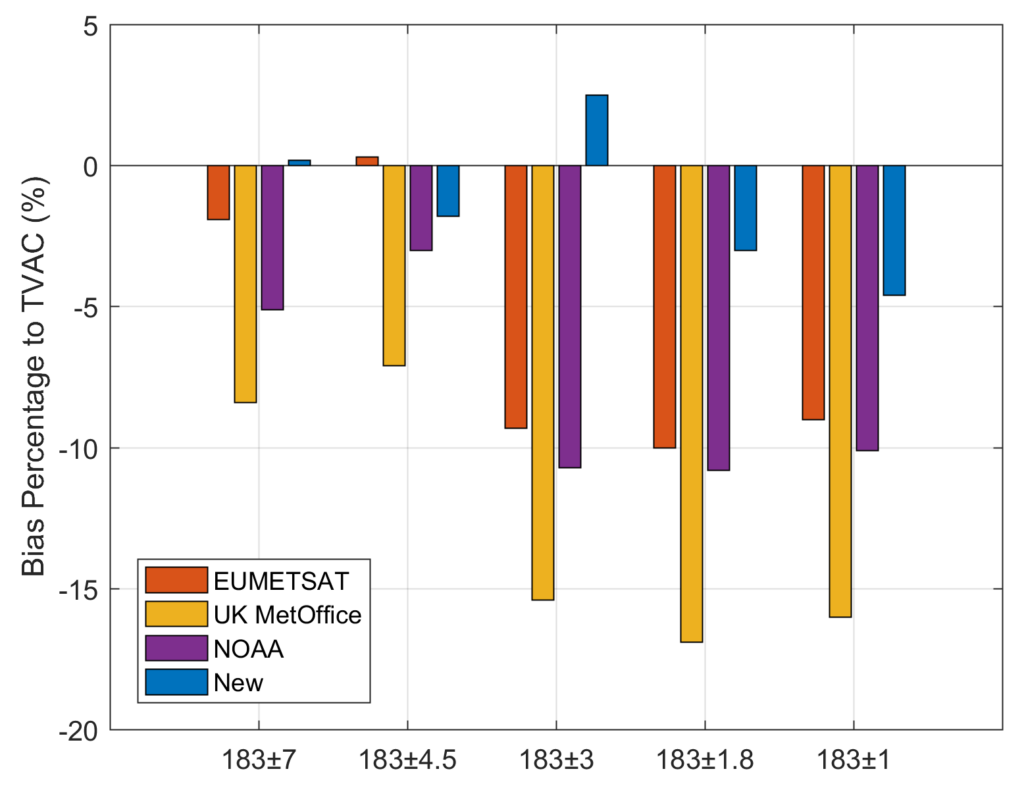
ESSIC/CISESS Scientists John Xun Yang and Hu Yang have a new article in press at IEEE Transactions on Geoscience and Remote Sensing titled “A New Algorithm for Determining the Noise Equivalent Delta Temperature of In-Orbit Microwave Radiometers”.
The noise equivalent delta temperature (NEDT) represents the radiometric resolution and sensitivity of a radiometer. NEDT is a critical metric that needs to meet the mission requirement. Measuring NEDT allows for monitoring hardware noise and health. NEDT associated uncertainty not only affects the level-1 radiance/brightness temperature but also propagates through higher level science products. NEDT is also an important parameter in simulating and assimilating satellite data for examining radiometric uncertainty propagation. The accurate measurement and estimate of NEDT are a vital component of uncertainty quantification of satellite-based data records.
Agencies of EUMETSAT, UK Met Office, and NOAA have developed their own algorithms for calculating and monitoring NEDT of in-orbit microwave radiometers. However, a notable underestimate of NEDT is found at channels, such as G-band, which is prone to 1/f noise. Inconsistency has been found between different algorithms. The researchers reviewed the theoretical basis for determining NEDT and developed a new algorithm of clear physics and mathematics. They also have done comparison and validation with the prelaunch thermal vacuum chamber (TVAC) test, in-orbit data, and simulation. The new algorithm significantly improves the estimate of NEDT, including the G-band and advances the understanding of algorithm structures and physical foundations.
Dr. Hu Yang received his Ph.D degree from the Institute of Remote Sensing Application, China Academy of Science, Beijing, in 2003. He has over twenty years experiences on active and passive microwave remote sensing, microwave radiometer ground and on-orbit calibration, satellite geolocation, and ground calibration processing system development. He is now a research scientist in the Cooperative Institute for Satellite Earth System Studies (CISESS), University of Maryland, working on S-NPP and JPSS ATMS calibration/validation. He has published over 40 peer reviewed journals on microwave remote sensing related studies.
John Xun Yang is an assistant research scientist at Earth System Science Interdisciplinary Center (ESSIC) of the University of Maryland. He has over ten years of experience in Earth remote sensing, microwave radiometry, hardware development, calibration, and retrievals. He has been involved with four NASA/NOAA satellite missions, including the Aquarius, GPM, CYGNSS, and JPSS missions.
To access the paper, click here: “A New Algorithm for Determining the Noise Equivalent Delta Temperature of In-Orbit Microwave Radiometers”.






